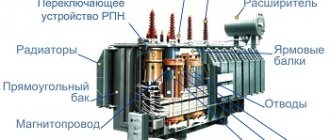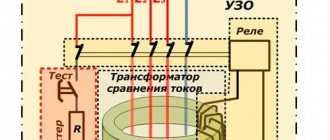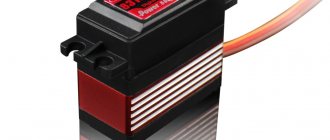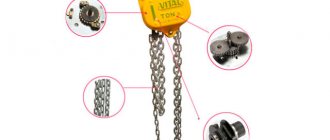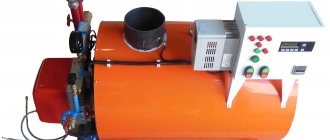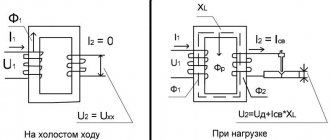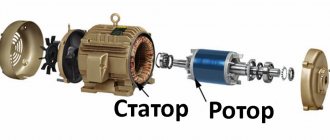Semiconductor materials have many interesting properties. One of them is the change in resistance under the influence of light. The electrical resistance of semiconductor elements is used in devices called photoresistors. Controlling the internal resistance of semiconductor devices using light fluxes was widely used in outdated designs, less often in modern electrical engineering.
A semiconductor resistor can change the parameters of the electric current depending on the intensity of light. This property is often used in practice to create devices controlled by radiation flow. Today, the industry supplies the market with photoresistors with various characteristics, which means that they are still used in modern electrical devices.
What is a photoresistor?
Let us dwell in more detail on the description of a semiconductor photoresistor. First, let's give it a definition.
A photoresistor is a semiconductor device (sensor) that, when irradiated with light, changes (reduces) its internal resistance.
Unlike other types of photocells (photodiodes and phototransistors), this device does not have a pn junction. This means that the photoresistor can conduct current regardless of its direction and can work not only in direct current circuits, where constant voltage is present, but also with alternating currents.
Troubleshooting algorithm
Visual inspection
Any repair begins with an external inspection of the board. It is necessary to examine all components without instruments and pay special attention to yellowed, blackened parts and components with traces of soot or soot. For external inspection, a magnifying glass or microscope can help you if you are working with dense mounting of SMD components. Torn parts may indicate not only a local problem, but also a problem in the strapping elements of that part. For example, an exploding transistor could drag down a couple of elements in the harness.
An area on a board that turns yellow due to temperature does not always indicate the consequences of part burnout. Sometimes this happens as a result of long-term operation of the device; when checked, all parts may turn out to be intact.
In addition to inspecting external defects and traces of burning, it is worth sniffing to check if there is an unpleasant odor like burnt rubber. If you find a blackened element, you need to check it. It may have one of three malfunctions:
Sometimes a breakdown is so obvious that it can be determined without a multimeter, as in the example in the photo:
Checking the resistor for open circuit
You can check the serviceability using a regular dial tone or a tester in diode testing mode with sound indication (see photo below). It is worth noting that by testing you can only check resistors with a resistance of units of Ohms - tens of kOhms. And not every continuity can handle 100 kOhm.
To check, you just need to connect both probes to the terminals of the resistor, it doesn’t matter whether it’s an SMD component or an output one. A quick check can be carried out without desoldering, after which you can still desolder the suspicious elements and check again for a break.
Attention! When checking parts without desoldering them from the printed circuit board, be careful - you may be misled by parallel elements. This is true both when checking without instruments and when checking with a multimeter. Don't be lazy and better unsolder the suspicious part. This way you can only check those resistors where you are sure that nothing is installed parallel to them in the circuit.
Short circuit check
In addition to the break, the resistor could have short-circuited. If you use a dial, it should be low-impedance, for example, on an incandescent lamp. Because high-resistance LED dials “ring” the circuit with a resistance of tens of kOhms without significant changes in the brightness of the glow. Sound indicators cope with this test better than LEDs. By the frequency of beeping one can judge the integrity of the circuit; complex measuring instruments such as a multimeter and ohmmeter are in first place in terms of reliability.
Checking for short circuit is carried out in one way, let's look at the instructions step by step:
- Measure a section of the circuit with an ohmmeter, continuity tester or other device.
- If its resistance tends to zero and continuity indicates a short circuit, unsolder the suspicious element.
- Check the section of the circuit already without the element; if the short circuit is gone, you have found a fault; if not, solder the neighboring ones until it goes away.
- The remaining elements are mounted back, the one after which the short circuit is gone is replaced.
- Check the work results for the presence of short circuits.
Read also: How to warm up concrete in winter
Here is a clear example that a burnt resistor has left marks on neighboring resistors; there is a possibility that they are also damaged:
The resistor has turned black from the high temperature, not only traces of burning are visible on the neighboring elements, but also traces of overheated paint, its color has changed, and part of the conductive resistive layer could be damaged.
The video below clearly shows how to check a resistor with a multimeter:
Device
The design of different photoresistor models may differ in the shape and material of the housing. But at the heart of each such device is a substrate, most often ceramic, coated with a layer of semiconductor material. A thin layer of gold, platinum or other corrosion-resistant metal is applied on top of this semiconductor. (see Fig. 1). The layers are applied by spraying.
Rice. 1. Photoresistor design
The sawn layers are connected to electrodes, which receive electric current. This entire structure is often covered with transparent plastic and placed in a housing with a window for light rays to enter (see Fig. 2).
Rice. 2. Photoresistor design
The shape of the housing, its dimensions and material depend on the photoresistor model, determined by the manufacturer’s technology. Examples of models are shown in Figures 3 and 4.
Rice. 3. Photoresistor based sensor
Rice. 4. Photodetector
Today on sale you can see parts in a metal case, often in plastic or open-type models. Some models are made without the sputtering method, but cut out a thin resistive layer directly from the semiconductor. There are also technologies for manufacturing film photo sensors (see Fig. 5).
Rice. 5. Design of film photoresistor
Various photoresist materials are used to deposit a semiconductor layer. To capture the visible spectrum of light, cadmium selenide and cadmium sulfide are used.
A wider range of materials are susceptible to infrared radiation:
- germanium, pure or alloyed with impurities of gold, copper, zinc;
- silicon;
- lead sulfide and other chemical compounds based on it;
- indium antimonide or arsenide;
- other chemical compounds sensitive to infrared rays.
Pure germanium or silicon is used in the manufacture of photoresistors with an internal photoeffect, and substances doped with impurities are used for structures with an external photoeffect. Regardless of the type of photoresist material used, both types of photoresistors have the same properties - an inverse, nonlinear dependence of resistance on the strength of the luminous flux.
Design and Application
Modern photoresistors are made from lead selenide, lead sulfide, indium antimonide, but most often from cadmium and cadmium selenide and sulfide. The spectral characteristics of cadmium sulfide almost completely coincide with the structure of the human eye. The peak sensitivity wavelength is 560-600 nm, which corresponds to the visible part of the spectrum.
It will be interesting➡ How to calculate a resistor for an LED?
To make an element from cadmium sulfide, highly purified powder is mixed with inert binders. Then, this mixture is sintered and pressed. In a vacuum environment, a thin photosensitive layer is applied to the base with electrodes in the form of a winding path. Then, the base is placed in a transparent shell to protect the photosensitive element. The main area of application of these radio elements is automation; with their help, you can create simple and reliable photo relay circuits without the use of current amplifiers.
Such photo relays are used in control and monitoring systems. In measurement technology, photoresistors are used to measure high temperatures in various technological processes. Photoresistors also have a specified temperature range. If you use the sensor at different temperatures, then it is necessary to introduce clarifying transformations, because the resistance property depends on the external temperature.
To characterize the intensity of light, the physical quantity illumination (designation E) is used, which shows the amount of light flux reaching any surface. The unit of measurement is lux (lx), where 1 lux means that a luminous flux of 1 lumen (lm) falls uniformly on a surface measuring 1 m2. In real life, light almost never falls evenly on a (living) surface and therefore the illumination is greater in the average value. For comparison, here are some illumination examples:
Wave color and wavelength range.
Principle of operation
In an inactive state, a semiconductor exhibits the properties of a dielectric. In order for it to conduct current, the substance must be exposed to an external stimulator. Such a stimulant can be thermal or light.
Under the influence of photons of light, the semiconductor is saturated with electrons, as a result of which it becomes capable of conducting electric current. The more electrons produced, the less resistance the semiconductor material has to current flow. The dependence of current on lighting is illustrated by the graph in Fig. 6.
Rice. 6. Graph of current versus lighting
The operation of photoresistors is based on this principle. The formation of electrons is promoted by both the visible and non-visible spectrum of light. Moreover, the photoresistor is more sensitive to infrared rays, which have higher energy. Pure materials exhibit low sensitivity to visible light.
To increase the sensitivity of the photoresist layer, it is doped with various additives, which form a renewed outer band located on top of the valence band of the semiconductor. Such external electron saturation will require less energy to transition to the conduction photocurrent saturation state. An external photoelectric effect occurs, stimulated by the visible spectrum of radiation.
By selecting alloying additives, it is possible to create photoresistors for operation in different spectral ranges. A photoresistor has spectral sensitivity. If the wavelength of light is outside the conduction zone, then the device stops responding to such rays. Illumination in such cases can no longer influence the conductivity of the product.
The choice of spectral characteristics depends on the operating conditions of the product and the tasks being solved. If the radiation intensities are not sufficient for stable operation of the device, its efficiency can be increased by selecting sensitive elements with an appropriate semiconductor layer.
It is important to remember that the inertia of photoresistors is noticeably higher than that of photodiodes and phototransistors. The inertia of the device occurs because it takes some time to saturate the semiconductor layer. Therefore, the sensor always gives a signal with some delay.
What is a photoresistor, operating principle and scope of application
Electrical engineering uses a huge number of different elements, and not the least of them is a special kind of resistance - a photoresistor. In this article I will tell you what it is, as well as where these elements are still actively used. So, let's begin.
What is a photoresistor, operating principle and scope of application
Content
- Definition, execution and diagramming
- Operating principle
- How to check the health of an element
- Main characteristics of photoresistors
- Where are these elements used?
- Conclusion
Definition, execution and diagramming
So, first, let's give a definition. A photoresistor is a semiconductor device whose resistance (conductivity) varies depending on the level of illumination of the sensitive part of the product.
What is a photoresistor, operating principle and scope of application
The photo above shows the most common version, but there are models in special protective casings with a transparent top.
And this is how such an element is indicated in the diagrams:
yandex.ru
Operating principle
Now let's find out what the operating principle of this radio element is.
A semiconductor is placed between two conductive electrodes. If light does not hit the semiconductor, its ohmic resistance is high (up to several megohms). As soon as light hits a semiconductor, its resistance begins to decrease, that is, its conductivity increases.
yandex.ru
The following materials can be used to produce the semiconducting layer: Cadmium sulfide, Lead sulfide, Cadmium Selenite, etc. Its spectral characteristics will depend on what material was used to produce the semiconductor.
- In other words, the range of wavelengths, when illuminated, the correct change in resistance will occur.
- It is for this reason that when choosing a resistor it is important to understand what spectrum it is intended to operate in.
- The spectral characteristics of the materials are as follows:
yandex.ru
Very often the question arises: what is the polarity of the photoresistor? So, this element does not have a PN junction, which means that there is no specific direction of current flow either. That is, it makes absolutely no difference how to connect the photoresistor, since it is a non-polar element.
How to check the health of an element
Testing a photoresistor is actually extremely simple. For this we need a multimeter and, for example, a folder for papers.
What is a photoresistor, operating principle and scope of application
The test is performed as follows: move the multimeter handle to the resistance measurement position, connect the probes with crocodile clips (polarity does not matter) and place the element in a folder to prevent exposure of the element to light.
What is a photoresistor, operating principle and scope of application
This way you will get the resistance of the element in the darkened state. By removing the photoresistor from the folder, you will see that the resistance of the element has changed. Moreover, the more intense the luminous flux, the less resistance the element will have.
What is a photoresistor, operating principle and scope of application
Moreover, the dependence of resistance on illumination will have the following form:
yandex.ru
Main characteristics of photoresistors
These elements have several main characteristics that you should pay attention to when choosing a product:
1. Dark resistance. This is the resistance of the element when it is not affected by luminous flux.
2. Integral photosensitivity. This parameter describes the response of the element, the change in the passing current to a change in the luminous flux. This parameter is measured at constant voltage. Designated as S. (A/lm).
It is also important to know that all photoresistors have inertia to one degree or another. The resistance does not change instantly, but over a certain period of time (tens of microseconds). This factor limits the use of photoresistors in high-speed circuits.
Where are these elements used?
So, despite some limitations, these elements are actively used in the following devices:
1. Photo relay. Devices that are designed to automatically turn on and off lighting systems without active human intervention.
2. Light sensors. In such devices, photoresistors perform the function of a luminous flux recorder.
What is a photoresistor, operating principle and scope of application
3. Alarm. In alarm systems, photoresistors sensitive to ultraviolet waves are used. The principle is that the photoresistor is constantly illuminated by a source of ultraviolet radiation and as soon as an obstacle appears between the source and the receiver, an alarm is triggered.
4. Sensors that register the presence of something.
Designation on the diagram
It is quite simple to distinguish a photoresistor in a circuit from a regular resistor. The photoresistor icon has two arrows pointing towards the rectangle. These arrows symbolize the flow of light (see Fig. 7). In some diagrams, the resistor symbol is placed inside a circle, while in others it is indicated by a rectangle without a circle. But the main difference is the presence of arrows.
Rice. 7. Photoresistor in the diagram
Kinds
Despite the variety of photo sensors, they can be divided into only two types:
- Photoresistors with internal photoeffect;
- Sensors with external photoeffect.
They differ only in production technology, or more precisely, in the composition of the photoresist layer. The first are photoresistors, in which the semiconductor is made from pure chemical elements, without impurities. They are insensitive to visible light, but respond well to heat rays (infrared light).
Photoresistors with external effect contain impurities that dope the main composition of the semiconductor substance. The sensitivity spectrum of these sensors is much wider and moves into the visible spectrum and even into the UV radiation zone.
According to the principle of operation, these two types of photoresistors do not differ. Their internal resistance decreases nonlinearly with increasing intensity of the light flux in the sensitivity zone.
Specifications
What criteria should be used when choosing a photoresistor?
First of all, pay attention to the spectral characteristics. If you select this parameter incorrectly, then with a high degree of probability the device will not work or its operation will be unstable. For example, internal effect photoresistors will not respond to daylight. If you do not plan to use an IR emitter as an irradiator, then opt for the second type of device.
Other important characteristics:
- integral sensitivity;
- energy characteristic (sensitivity threshold);
- inertia.
The current-voltage characteristic shows the dependence of the current value on the applied voltage. Graphically, this characteristic is depicted in the form of a hyperbola. But if the condition of stability of the lighting intensity is met, then the luminous flux Ф = const, then the dependence of the current on the voltage will be linear, and the graph will be a straight line. (see Fig. 8 a).
The energy characteristic shows how the current strength depends on the magnitude of the luminous flux, at a constant voltage (see Fig. 8 b). The graph shows how the energy curve changes: at first it rushes upward, and when a certain limit is reached, it smoothly changes direction and is almost parallel to the axis of the light flux. This is explained by the fact that after the semiconductor element is saturated, its resistance is minimal and subsequently does not depend on the light intensity.
Figure 8. Photoresistor characteristics
As for inertia, it is present to varying degrees in all types of sensors. If you need a lightning-fast reaction to light, then it is better to use a photodiode.
Photo relay
Photoresistors are widely used in special photo relays.
Photo relay
A device for automatic control of various installations, using the inertia-free photoelectric effect, that is, it reacts almost instantly to light exposure or its change.
A simple photo relay is the following circuit:
If the luminous flux F F F falls on the photoresistor, then such a current passes in circuit I that the electromagnet in this circuit holds the iron armature K 1 K_1 K1, and the key K 2 K_2 K2 in circle II is open. If some moving body (for example, on a conveyor) blocks the light flux, then the current in circuit II will decrease, spring P will tear off the armature K 1 K_1 K1 from the electromagnet and inhibit the key K 2 K_2 K2, in circuit II they will begin to work devices included in it: bell, counter, etc.
The applications of photo relays are extremely diverse. It turns street lighting on and off at the right time, sorts various parts by shape and size, and instantly stops the machine if a person’s hand is in the danger zone, blocking the flow of light. In particular, in mines it is used to control the movement of a trolley, in devices for automating the process of rolling and loading coal into railway cars, determining the loading level of bunkers, etc.
Advantages and disadvantages
The strengths of photoresistors are their high reliability and low price. Sometimes a useful property is its current-voltage characteristic, when the current does not increase at lightning speed, but gradually. The advantage is the low sensitivity threshold.
The disadvantages include the inertia of the sensors. Signal lag reduces the performance of thermistor-based devices, which is often unacceptable.
Application
Due to their low sensitivity threshold, photoresistors are often used to detect weak fluxes of light waves.
This quality is used:
- in sorting machines;
- in the printing industry to register the fact of paper tape breakage;
- in agricultural machines to control the density of grain sowing;
- in light relays for turning on/off lighting, in photo exposure meters, etc.
In industrial electronics, photoresistors are used to count products moving on a conveyor belt or falling into a storage container.
The sensor itself cannot perform calculations, but its signals are used and processed by microcontrollers, with subsequent calculations. Photoresistor signals are sensed by both analog and digital logic circuits. A signal delay of a fraction of a second in most cases is not an obstacle to the use of photoresistors.
Based on photoresistors, optocouplers are produced - devices with their own light source that can be controlled. An example of a diagram of such a device is shown in Fig. 9.
Rice. 9. Optocoupler circuit
Despite some shortcomings of the devices, the era of photoresistors is apparently not over yet.
Application area
In the modern world, the scope of application of these radio components has been significantly expanded.
The use of various photoresistors operating in the visible spectrum is quite extensive. It can be:
- Automatic light switch systems.
- Counting devices.
- Web or paper break sensors.
- Intrusion sensors.
- In devices equipped with exposure meters. For example, such elements could be used in standard point-and-shoot cameras.
In themselves, they are only an element of complex photodetector devices, which, in addition to the photodetector, may include:
- integrated amplifier;
- a microcircuit responsible for automatic lighting adjustment;
- power circuit diagrams, supplemented by a cooling system based on Peltier elements.
All this variety of elements for photodetectors is contained in a small sealed housing.
If these devices operate in the IR range, their scope is slightly different. They are used as part of complex devices such as:
- flame detection sensors;
- non-contact temperature measurement systems;
- humidity level monitoring systems;
- used to detect carbon dioxide;
- in infrared gas analyzers;
- used in paper tape break sensors in printing houses or in the paper industry;
- in industrial electronics, connecting a photoresistor can be used to automatically count products that move along a conveyor belt.
Accordingly, based on the fact that such a resistor will be controlled, its parameters are calculated.
For an example of how this element is used in practice, let's look at the photo relay circuit that controls street lighting.
Automation of street lighting
Automatic devices that turn on street lighting are able to detect the presence/absence of sunlight.
Here is a typical implementation diagram for connecting a photoresistor to automatically activate a night lighting device.
In general terms, the principle of operation of the circuit.
With the onset of twilight and at night, the resistance of the LDR increases, which causes a decrease in the voltage across the variable resistor R2. Transistor VT1 is closed, and VT2 opens, thus supplying voltage to the relay that turns on the lamp.
This is a completely working photo relay circuit, but its main drawback is the lack of hysteresis. This causes the relay to briefly buzz during twilight hours when there are slight changes in illumination.
This electronic part helps monitor the ambient light level.
Sensors for other conditions
In the printing industry, designs using a special photoresistor monitor the breakage of a paper roll. They can also be used to count paper sheets on a conveyor belt.
Connecting a photoresistor to Arduino
Light sensors that can use photoresistors can be implemented with your own hands based on Arduino boards.
Such schemes are quite simple, there is no question of “where to get them”, since they are available in online stores, and their price does not scare away customers.
A homemade module makes it possible to control the light level and react to its changes.
Having such an Arduino board in hand, it is easy to implement projects such as:
- light sensor;
- to turn on/off the relay;
- starts engines and so on.
Here is a typical example of using a light detector based on an Arduino board.
